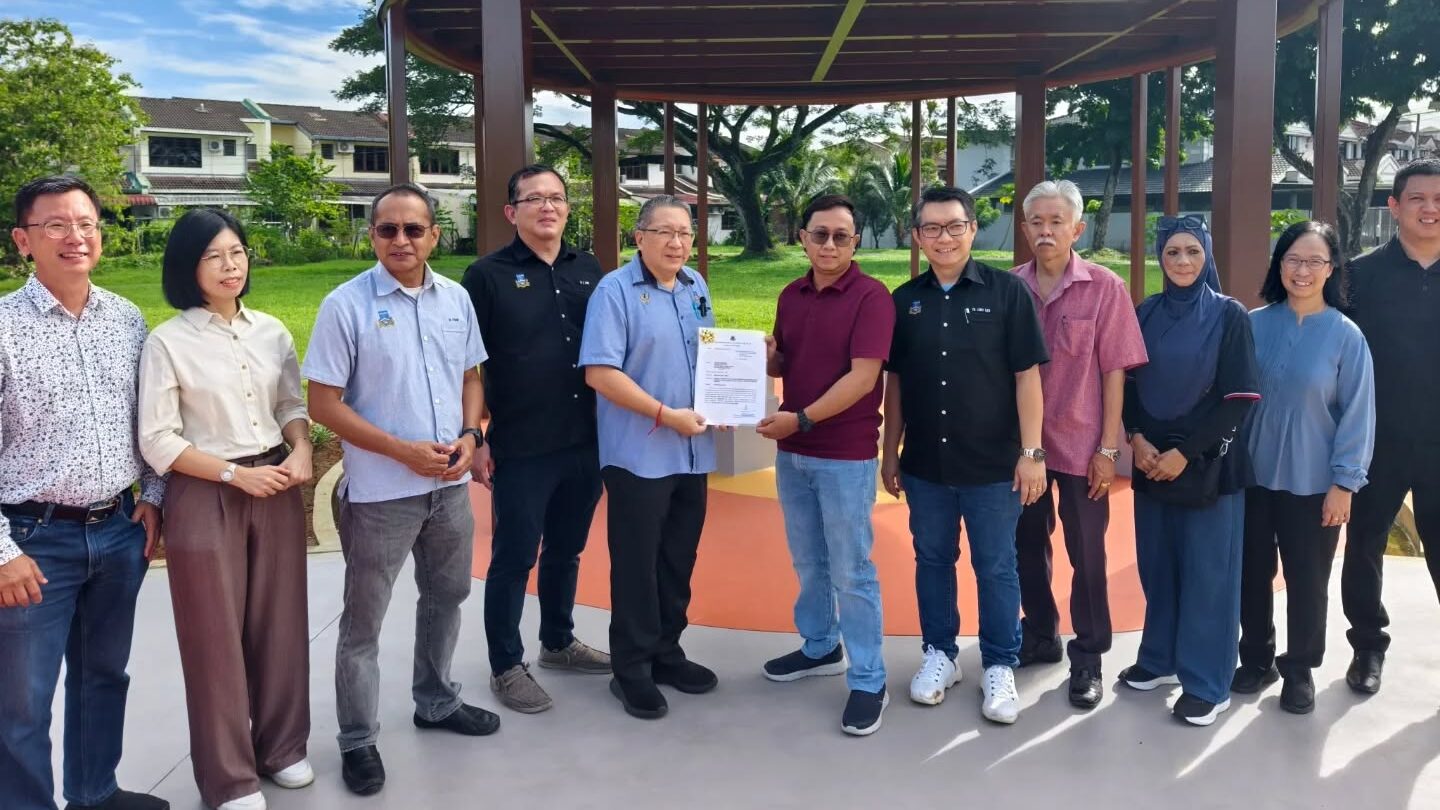KUCHING — The completion of the upgraded open space at Lorong Bayor Bukit 14 marks another positive step in Kuching South City Council’s (MBKS) ongoing efforts to enhance community spaces and promote a healthy urban lifestyle.
The project, launched under the Pembangunan Landskap Persekitaran Kehidupan programme, was funded by the Jabatan Landskap Negara (JLN) under the Ministry of Housing and Local Government (KPKT). Work began on 11 June 2025 and was successfully completed on 1 October 2025, within the planned schedule.
Carried out by SHUMS Enterprise through an open tender process, the project has turned the area into a lively and inclusive park that caters to people of all ages.
The upgraded park now features a new walkway with proper drainage, children’s playground, outdoor fitness equipment, gazebo, concrete table tennis table, hopscotch area, solar-powered lights, and new greenery. These facilities were designed to make the park safer, greener, and more comfortable for everyone — from children and adults to senior citizens.
Speaking at the completion ceremony, MBKS Mayor Dato Wee Hong Seng expressed gratitude to JLN, KPKT, and the local community for their support and cooperation throughout the project. The upgraded open space, they said, reflects the strong collaboration between the Federal Government and local authorities in improving public facilities that enhance residents’ well-being.
The initiative is part of MBKS’s long-term plan to develop Child Friendly and Age-Friendly public spaces, aligning with the Post COVID-19 Development Strategy (PCDS) 2030. It also supports key United Nations Sustainable Development Goals (SDGs) — namely:
- SDG 3: Good Health and Well-being
- SDG 11: Sustainable Cities and Communities
- SDG 13: Climate Action
MBKS reaffirmed its commitment to continue improving public parks and open areas across Kuching South, ensuring that every resident has access to safe, inclusive, and environmentally sustainable spaces.
The new Lorong Bayor Bukit 14 open space stands as a symbol of how community-focused planning and collaboration can create environments that improve both lifestyle and environmental quality.

